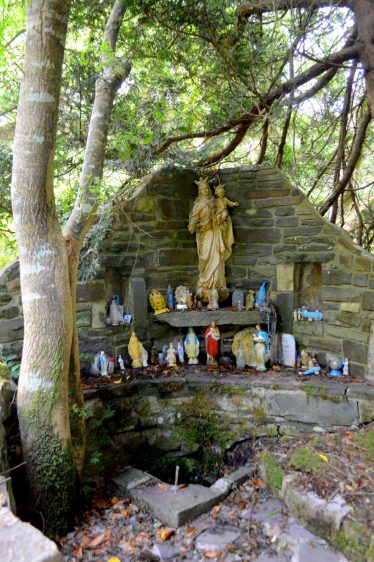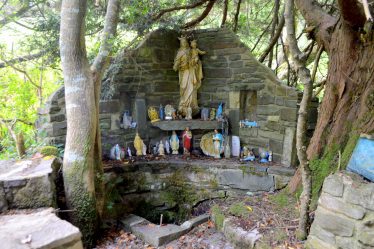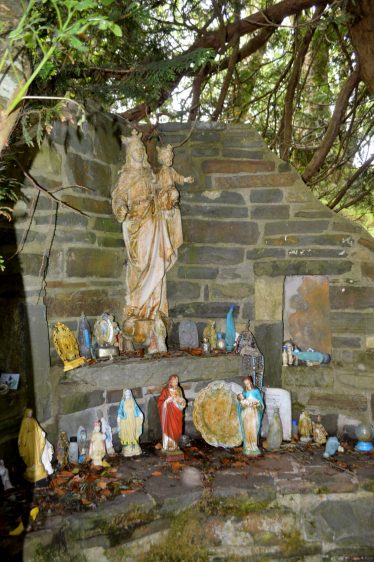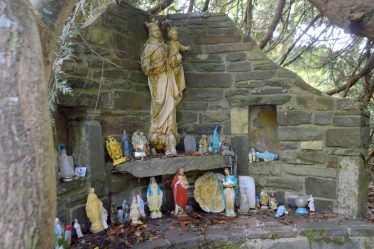Saint Niddaun's Well, Toberniddaun, Clondegad









Townland: Toberniddaun, Clondegad
Description of Holy Well and Landscape Setting
Saint Niddaun’s well is located on a hillock in the townland of Toberniddaun. It has been visited by people from the area for generations. There is a cillín or unconsecrated burial ground close to the well which once served as a burial site for unbaptised infants. A number of adult burials were also made at this cillín in the past.
Saint and Feast Day Associated with Holy Well
The well is dedicated to Saint Niddaun who appears in local folklore with Saint Screabhán.
Local folklore that recounts that many years ago the Saints Screabhán and Niddaun met at the cascade in Ballyclohessy, Ballynacally. They were debating which of them would stay in the area and which would go north to Lissycasey. They blessed two sticks and threw them into the river and decided that the Saint whose stick flowed north would travel north.
After the sticks had been thrown into the cascade, it was Saint Niddaun who travelled north to Tubber. The name of that area was then changed to Tobarniddaun. It is believed that Saint Niddaun is buried near the holy well here. Saint Screabhán is said to have stayed and his well is located near the cascade in Ballyclohessy.
The townland name Clondagad holds a reference to this story. ‘Cluain dá Gad’ means ‘The Meadow of the two Gads’, or sticks.
The well is said to have healing powers for the eyes. Visitations would take place on three evenings after sunset and people would wash their eyes with the water and recite one Our Father, one Hail Mary and one Glory Be. It was believed by some locals that this would also apply to problems with the ears. The person suffering should pick moss, wet it, place it on the eyes and ears and return it to the exact spot from which it was taken.
Natural Heritage around the Holy Well
There are mature oak and ash trees around the well. A large Scots Pine tree is at the back of the well and there are many whitethorn trees in the area, including at the cillín.
Heritage Attractions Nearby
The village of Lissycasey is near the holy well site.
Additional Information
The prayer sequence at the holy well is outlined in the National Folklore Schools Collection, 1930s:
‘A person doing a round would start in front of the altar by saying five Our Fathers and five Hail Mary’s. Then he would continue up a hill at the eastern side of the well and down at the other side. During the round a decade of the beads was to be said and five rounds like that were to be done. The round was finished up by praying one round of the beads at the altar.’
There is also reference to the holy well in the Ordnance Survey Letters, 1839:
‘There is a Holy Well in the Townland of Tobar-an-Fhiodain, from which the Townland takes its name.There are no devotions performed at it and I don’t believe it ever had any claim to sanctity. There is a little burial place for children in the same Townland called Cille-Fiddain.’
Discover More…
Ordnance Survey Letters, Royal Irish Academy
Ordnance Survey Letters, Ask About Ireland
Hester, M ‘The Holy Wells of Ballynacally and Lissycasey’, The Other Clare, vol.39, pp 74-77.
Record of Monuments and Places Number
RMP-CL049-00702
Surveyed by Michael Houlihan




No Comments
Add a comment about this page